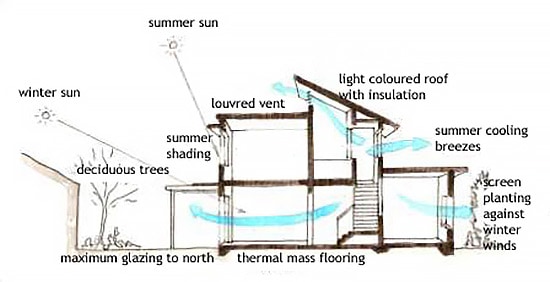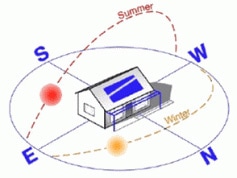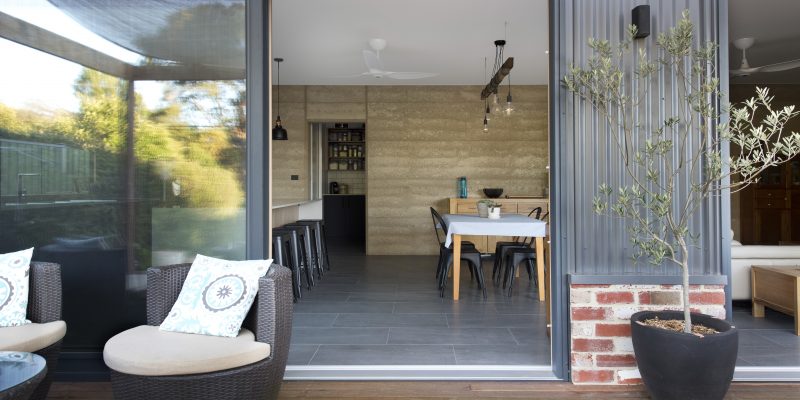Passive solar building design is sustainable building design that takes advantage of the climate to maintain a confortable temperature in the home. Windows, walls and floors are made to collect, store and distribute solar energy in the form of heat in winter and disperse solar heat in summer. Passive design reduces the need for you to use heating or cooling devices such as air-conditioners, gas heaters or other forms of electrical devices to control the temperature.
The Canberra climate has four distinct seasons – summers can be hot and winters are very cold. The high variation in temperature from day to night can, in a well-designed house, be used to benefit the overall comfort conditions within the home.
A well designed passive solar custom home can deliver comfortable conditions all year round with minimal auxiliary heating or cooling. Approximately 40% of the average household energy is used to heat and cool to achieve thermal comfort. In a well-designed house this rate could be cut to almost zero.

Orientation
Where possible, the long axis of the house should face as close as possible to north. This will increase the energy efficiency of your home, making it more comfortable to live in and cheaper to run. The living areas should be located on the northern side of the house.

Shading
Effective shading is required to reduce summer heat gains, improve comfort and save energy. In winter the sun from the north is at a lower angle where it can penetrate into the home and provide free heating.

Solar Passive Heating
Passive Solar Energy is the use of solar energy by passive means to reduce the heating demand of a building. A “passive” solar house provides cooling and heating to keep the home comfortable without the use of any mechanical equipment such as pumps, fans or air conditioners.

Solar Passive Heating
At 360 building solutions we look at design of the passive solar building and consult with you about the local climate and perform an accurate site analysis. Some elements we consider are window placement, size and glazing type, thermal insulation, thermal mass and shading.
All passive solar design techniques can be applied to new buildings, and if you wish to apply these techniques to an existing home we can talk about what can be adapted or retrofitted to create maximum passive solar gain.

